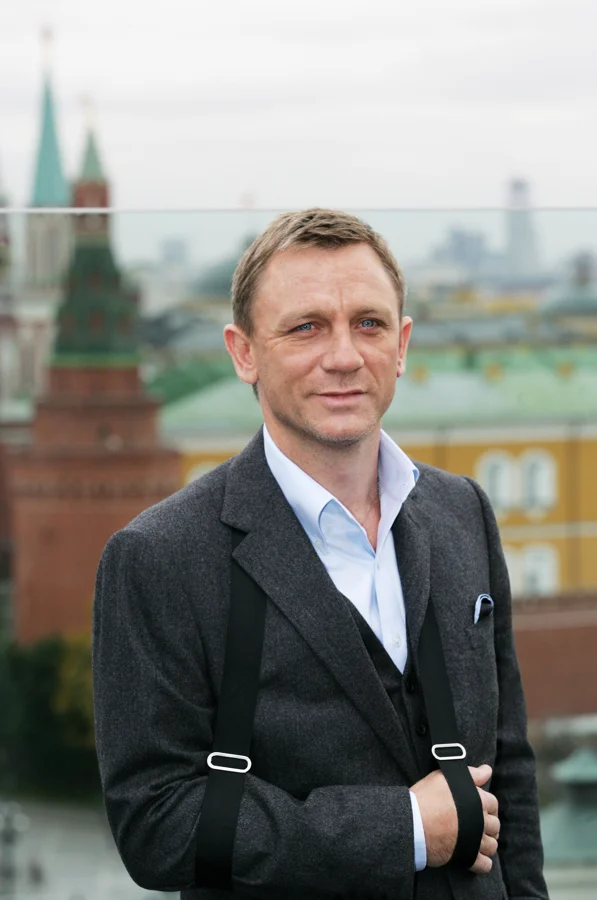The Daniel Craig Bond tropes have shaped a significant part of the recent James Bond franchise, blending modern storytelling with classic elements. However, as fans eagerly anticipate Amazon’s upcoming Bond 26, there are certain recurring clichés from Craig’s era that many believe should be retired. These outdated tropes, ranging from villain characterization to Bond’s own portrayal, risk undermining the series’ relevance and depth in future installments.
Overused Villain Scars and Facial Disfigurements
The depiction of James Bond villains sporting visible facial disfigurements or scars is a longstanding but increasingly problematic trope. While the Daniel Craig films addressed issues like casual sexism and outdated stereotypes, they ironically reinforced the idea that villainy must be marked by physical damage. Characters such as Le Chiffre in Casino Royale, Raoul Silva in Skyfall, and the antagonists Safin, Blofeld, and Primo in No Time to Die all fall into this pattern.
This association of external scarring with inner evil is a tired, simplistic storytelling device that fails to reflect modern sensibilities. Many real individuals carry scars resulting from accidents or illness and face discrimination because of it. The Bond series’ repeated use of this trope wrongly equates physical appearance with moral corruption, which not only feels offensive but also exposes lazy writing where deeper villain development is neglected.

Beyond offense, the frequency of villains with notable facial injuries strains credibility, especially in Craig’s run, where encountering so many disfigured adversaries seems unrealistic. This overreliance detracts from creating nuanced antagonists and should be discarded for fresher, more thoughtful villain portrayals.
The Problem with “Old Man” Bond and His Extended Retirements
A peculiar aspect of Daniel Craig’s tenure as James Bond is its emphasis on aging and retirement, with much of the narrative focusing on Bond’s supposed decline. Beginning in Skyfall, the storyline introduced the notion that Bond had “lost a step,” which then extended through the following films to depict a slow, reluctant retirement process. While a novel attempt to humanize the character, this shift lost momentum by Spectre and ultimately grew tiresome.
The next film, Bond 26, would benefit from sidestepping this “washed-up” arc entirely by casting a Bond who is already an experienced and capable agent. Craig’s narrative began with Bond as a fresh member of the 00 program in Casino Royale and Quantum of Solace, but moved quickly to portray him as past his prime, overlooking the peak years of his service at MI6.
Reestablishing Bond as a figure consistently at the height of his powers aligns more closely with the classic interpretation of 007. This approach would avoid the pitfall of a protagonist struggling against his obsolescence and instead showcase a Bond who is sharp, skilled, and fully engaged in his missions. If the new actor remains in the role for many years, the eventual exploration of aging could be revisited organically, but for now, a robust and commanding Bond is essential.
Villains Personally Connected to Bond: An Overused Device
A hallmark of many Daniel Craig Bond villains has been their deep personal connection to 007, typically involving bitter grudges or tragic pasts tied directly to Bond or his allies. While earlier films occasionally introduced such foes, like Alec Trevelyan in GoldenEye, Craig’s era intensified this trend to an arguably excessive degree.
Raoul Silva in Skyfall sought revenge against M, his former handler, positioning Bond firmly within that conflict. Safin in No Time to Die displayed an unsettling fixation on Madeleine Swann dating back to their childhood, adding layers of personal tragedy to his villainy. The most controversial example is Christoph Waltz’s Blofeld in Spectre, portrayed as Bond’s adoptive brother, twisting the franchise’s iconic antagonist into a jealous sibling with petty motives.
While Silva’s backstory enhanced the emotional stakes surrounding M’s death and Safin’s connection to Madeleine could have been a poignant narrative choice, turning Blofeld into a personal foe diminished his menace and the grandeur of the franchise’s villain legacy. Moreover, Spectre‘s attempt to retroactively link Blofeld to all previous villains was a stretch that strained the franchise’s believability.
For Bond 26, it will be critical to revive the traditional villain archetype driven by ambition, power, and narcissism rather than personal vendettas against Bond. Denis Villeneuve’s direction should aim to restore villains as formidable, independent forces of chaos and threat, avoiding repetitive emotional backstories that cheapen their impact.
“Denis Villeneuve must take the James Bond franchise back to a time when villains were motivated by megalomania and narcissism, not a 10-year-old 007 ruining their birthday party.”
– Anonymous
By moving away from these three Daniel Craig Bond tropes—facial disfigurement for villains, an aging and retreating Bond, and adversaries with personal grudges—the franchise can maintain its edge and appeal. These changes will help James Bond 26 honor Craig’s successes while shedding the elements that have frustrated fans and limited storytelling potential. Aligning Bond with a fresher, sharper, and more believable portrayal of heroism and villainy is key for the franchise’s future in a modern world.
